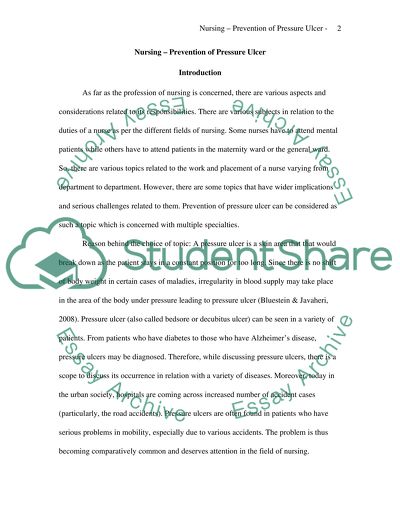Cite this document
(Prevention of Pressure Ulcer Essay Example | Topics and Well Written Essays - 1750 words, n.d.)
Prevention of Pressure Ulcer Essay Example | Topics and Well Written Essays - 1750 words. https://studentshare.org/health-sciences-medicine/1574390-nursing-prevention-of-pressure-ulcer
Prevention of Pressure Ulcer Essay Example | Topics and Well Written Essays - 1750 words. https://studentshare.org/health-sciences-medicine/1574390-nursing-prevention-of-pressure-ulcer
(Prevention of Pressure Ulcer Essay Example | Topics and Well Written Essays - 1750 Words)
Prevention of Pressure Ulcer Essay Example | Topics and Well Written Essays - 1750 Words. https://studentshare.org/health-sciences-medicine/1574390-nursing-prevention-of-pressure-ulcer.
Prevention of Pressure Ulcer Essay Example | Topics and Well Written Essays - 1750 Words. https://studentshare.org/health-sciences-medicine/1574390-nursing-prevention-of-pressure-ulcer.
“Prevention of Pressure Ulcer Essay Example | Topics and Well Written Essays - 1750 Words”. https://studentshare.org/health-sciences-medicine/1574390-nursing-prevention-of-pressure-ulcer.


